Now Anyone Can Feed a Baby

In fall 2020, a new baby is coming to town. That baby is the swaddled and bottlefed bundle in Person Feeding Baby, and that town is your emoji keyboard.

Unicode’s approval of Person Feeding Baby, along with its gendered variants Woman Feeding Baby and Man Feeding Baby, is not the first time baby feeding could be represented in emoji form. Three years ago, Unicode approved an emoji depicting a woman breastfeeding. The breastfeeding emoji, however, is only currently available in one gender.
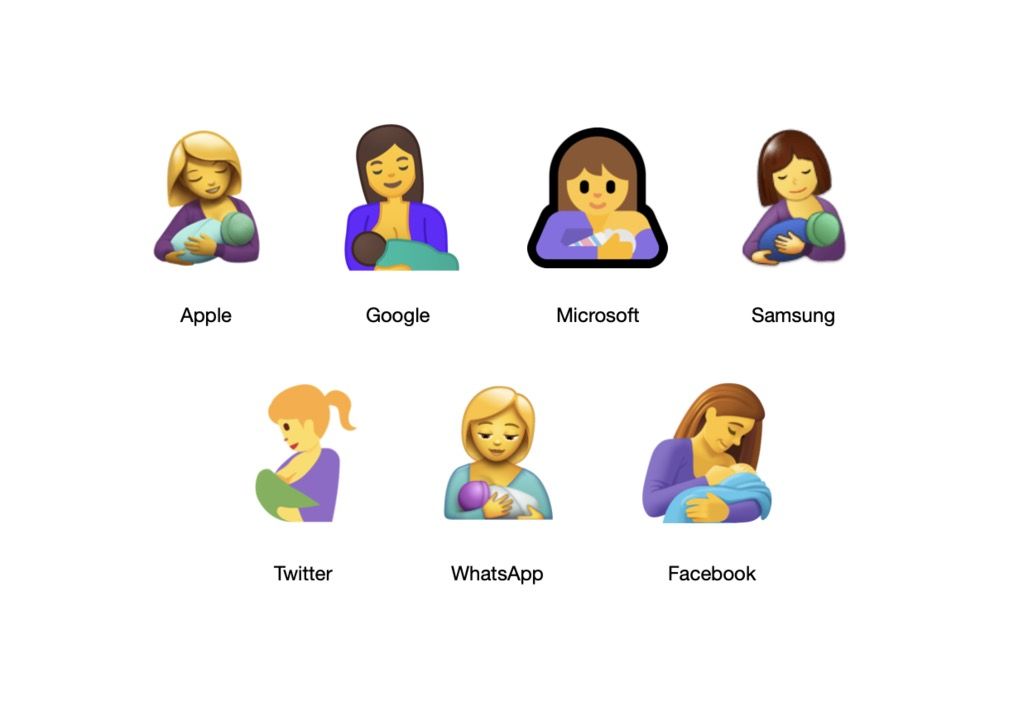
Why Is the Baby's Head Covered?
Each of these emojis support skin tone modifiers, though emoji skin tone gets complicated when there are multiple people in a single emoji.
Unicode has advised designers to keep the baby’s skin covered with a blanket because it’s not possible to select multiple skin tones for the different individuals in this emoji.
“For the following emoji and their skin-tone variants, the infant should be depicted with no skin tone showing, perhaps covered in a blanket, so that the emoji is treated as a single person for purposes of skin tone modification” – Unicode Technical Standard #51
The reason for Unicode’s guideline is clear; parents can—and often do—have different skin tones than their babies.
While most platforms adhered to this same guideline for 🤱 Breastfeeding, Facebook did not. Looking at their designs across releases, Facebook started off with the baby covered in their 2017 design, but the following year their design revealed the baby’s head. Their current design also does.
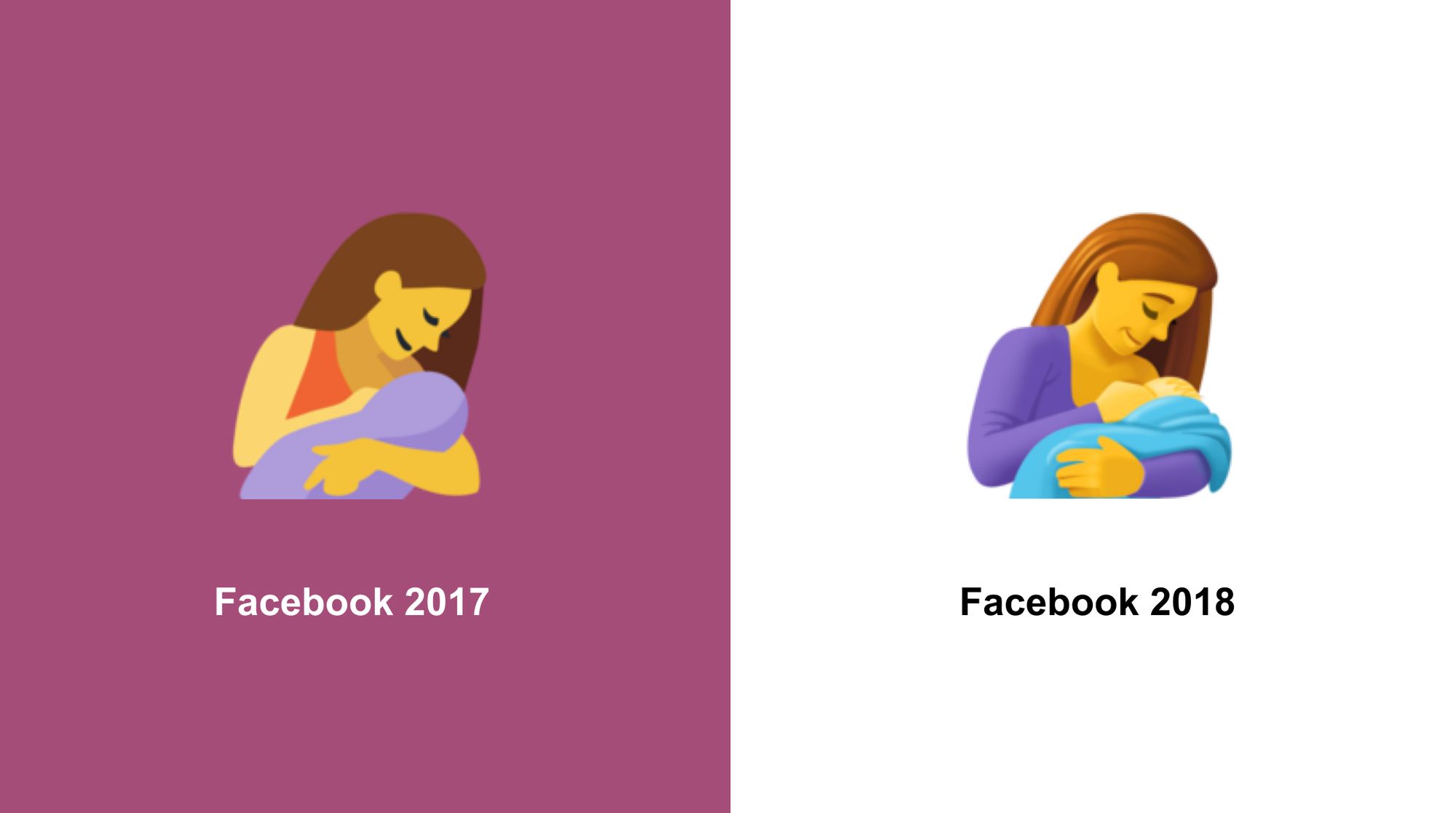
While baby heads are famously very cute, this design choice can be seen as exclusionary by parents with babies whose skin tones are different from their own. When you shrink these emojis down to text size, the detail of the head is so small anyway. Why not just cover the baby in a swaddle or stylish beanie?
Facebook designs for the bottle-feeding emoji variations show the baby's head, whereas Unicode guidelines suggest a swaddled baby, without visible skin.
— Emojipedia (@Emojipedia) July 6, 2020
This is to avoid requiring the baby skin tone to match that of the adult.
Designs may change prior to a final release. pic.twitter.com/7HFDeic88R
Many platforms have not yet released their designs for the person, woman, and man feeding baby emoji, though we can assume they will look similar to the breastfeeding emoji designs.
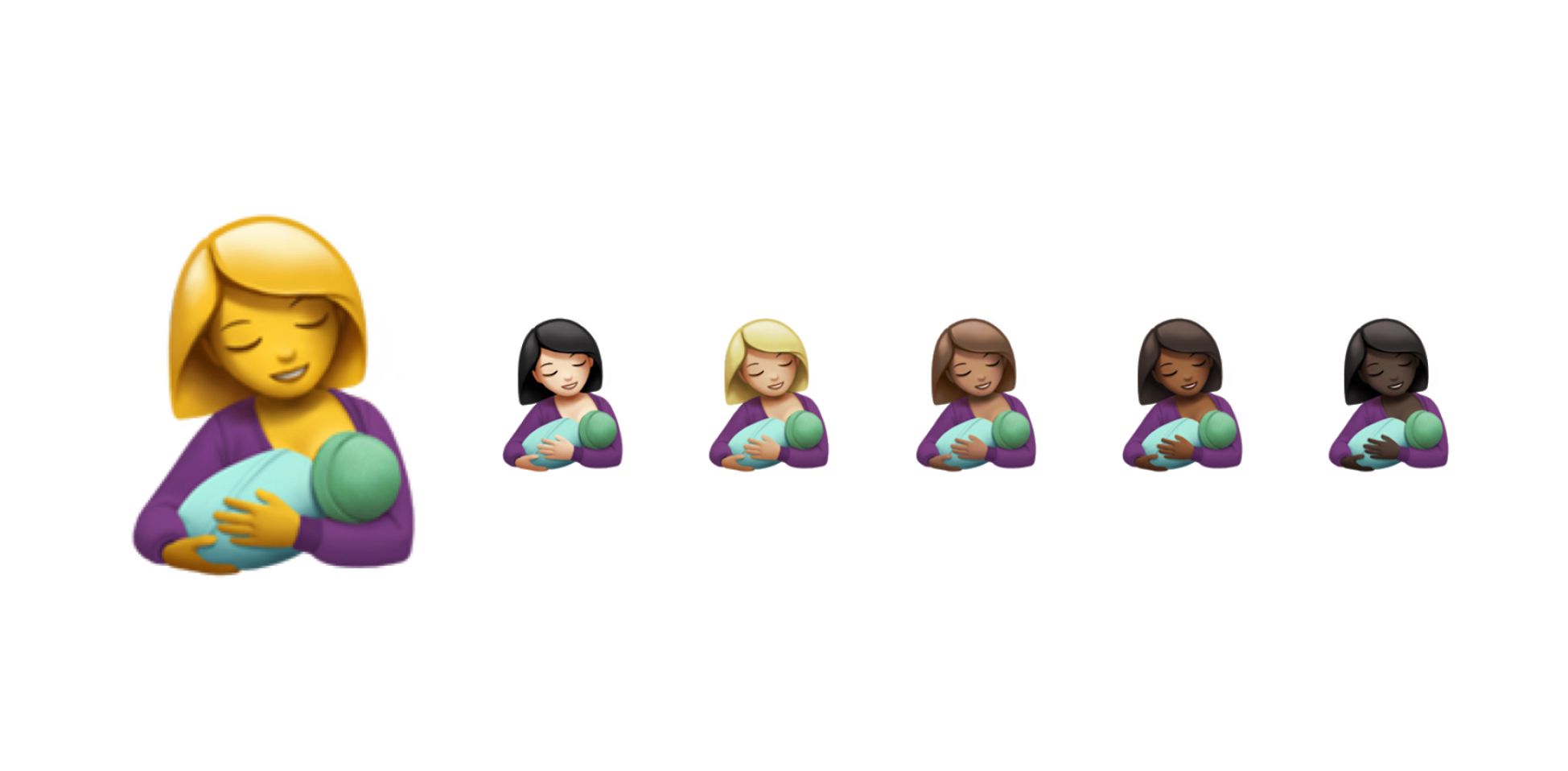
How Are Baby Feeding Emojis Made?
The person, woman, and man feeding baby emojis all use a special behind-the-scenes process that mashes multiple emojis together to display as a single emoji on our devices.
Each emoji is joined by an invisible character that acts as glue called a Zero Width Joiner (ZWJ, pronounced 'zwidge'). Emojis that use this process are called ZWJ Sequences.
The person, woman, and man feeding baby emojis combine the 🧑 Person, 👩 Woman, and 👨 Man emojis with 🍼 Baby Bottle.

One criterion for acceptance of new emoji by Unicode is that it not be easily representable by already existing emoji. You might argue that you can represent a person bottle feeding a baby with a simple sequence of three emojis, for example 👨🍼👶.
While it is true that anyone feeding a baby is so sleep deprived they can’t possibly type out three emojis to convey this informtion, that's not why these ZWJ sequences were approved.
The proposal for the person, woman, and man feeding baby emojis sheds light on the reason Unicode approved these new additions. It states: “Currently, the only emoji that depicts childcare is PERSON BREASTFEEDING and there are no emojis that depict men caring for their children.”
The proposal also argues that inclusion of the person, woman, and man feeding baby emojis “destigmatizes bottle feeding children.” There are many reasons why a family might have to or choose to bottle feed their children, and the addition of this emoji recognizes that.
Baby Feeding and Gender Representation in Emojis
While 🤱 Breastfeeding is only available in one emoji gender representation right now, it could follow the lead of the bottle feeding emoji. In the future we might see a person breastfeeding or a man breastfeeding on our emoji keyboards. These could be added to be more inclusive of nonbinary and trans parents.
There is precedent for adding further gender representations of an emoji years after its introduction to our devices.
In 2010, an emoji called "Bride with Veil" was approved in Unicode 6.0, primarily for compatibility with the bride emoji on Japanese phone carrier au.
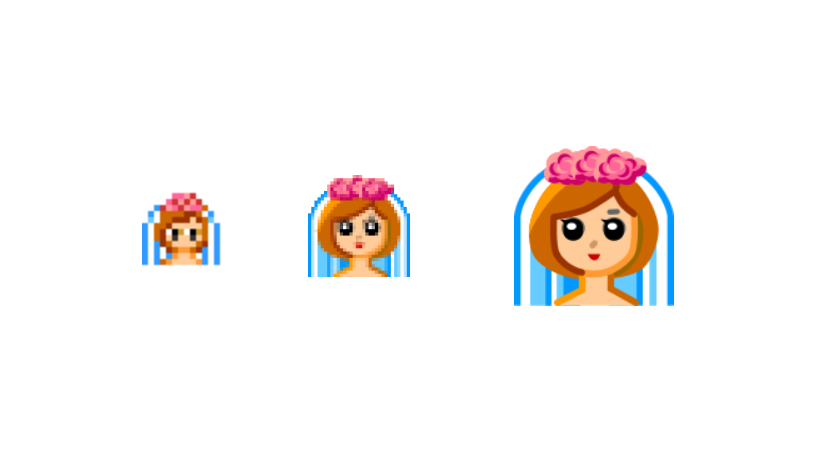
Ten years later this original emoji’s name was changed to 👰 Person with Veil, and given a gender-inclusive appearance to match.
This made way for two new emojis: 👰♀️ Woman with Veil and 👰♂️ Man with Veil, both coming to major platforms this year.
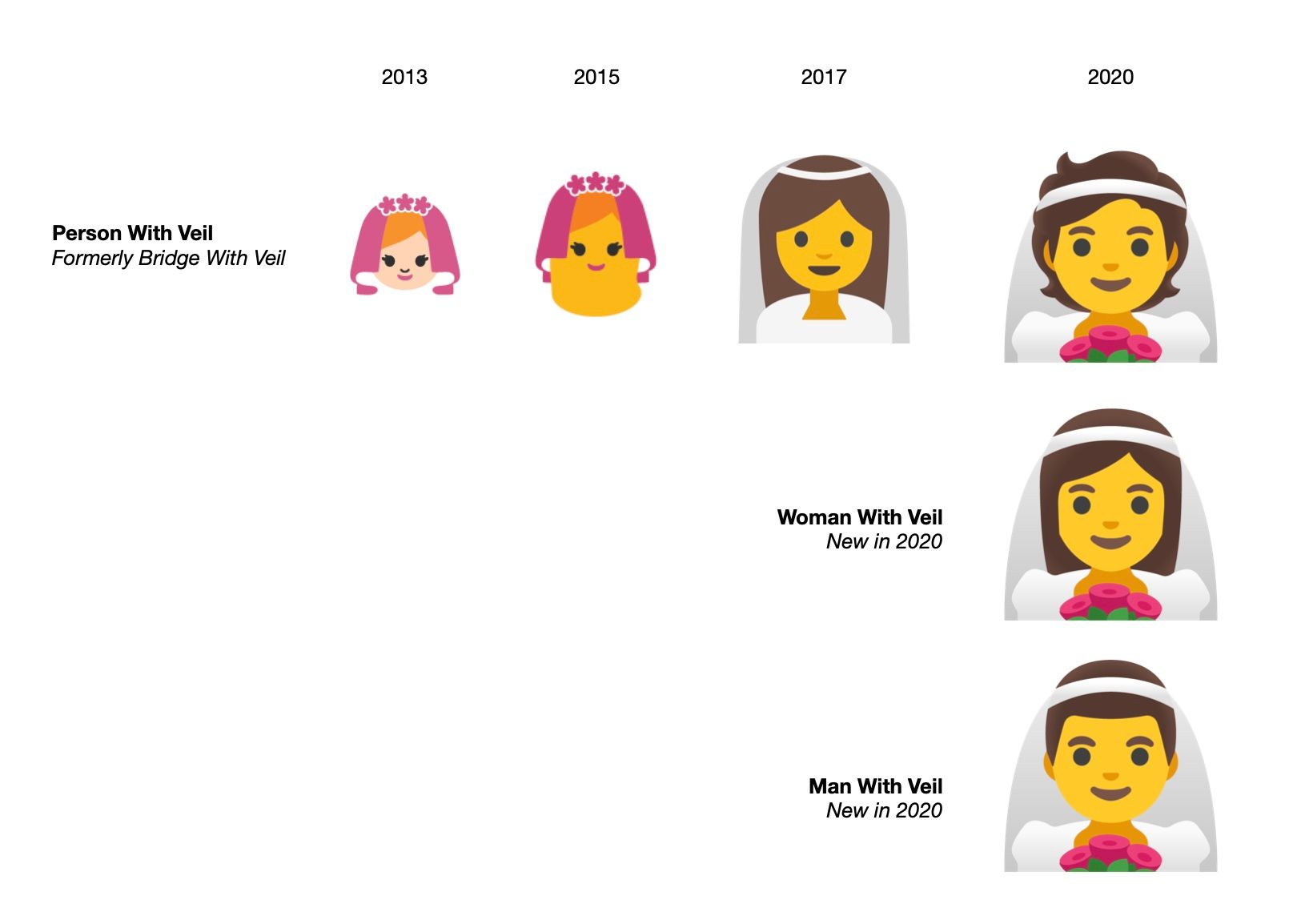
Similarly, the tuxedo emoji was originally named “Man in Tuxedo” when it was introduced in 2016 as a complement to the bride.
This year its name changed to 🤵 Person in Tuxedo so 🤵♀️ Woman in Tuxedo and 🤵♂️Man in Tuxedo options could be made available, allowing a consistent set of three options for nearly every human emoji.
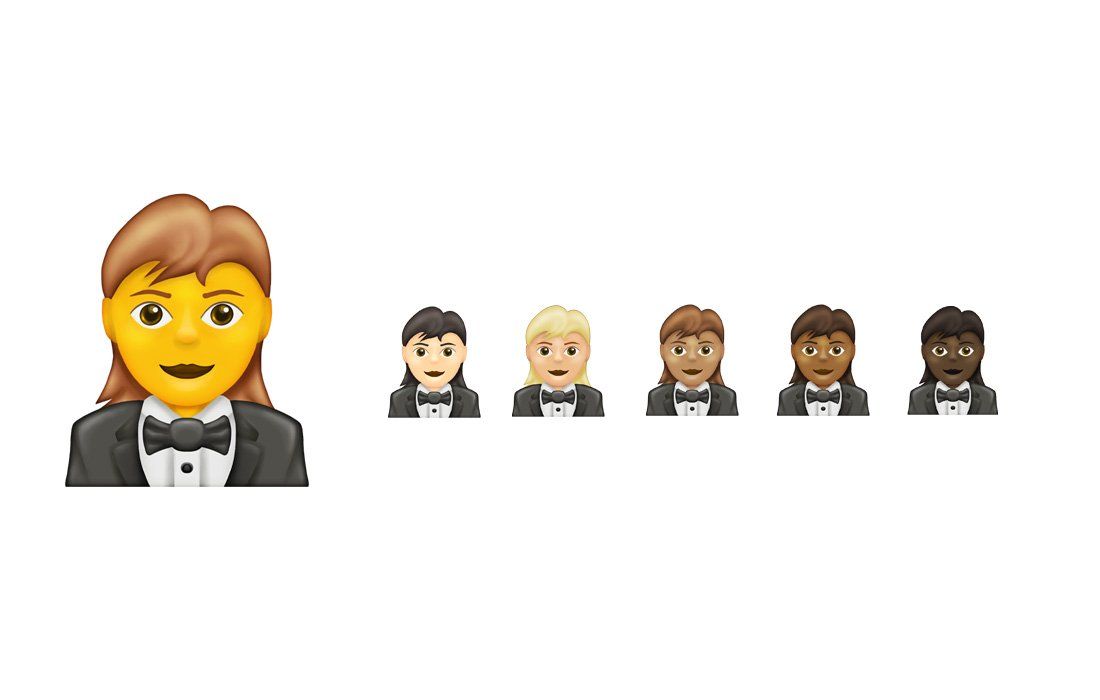
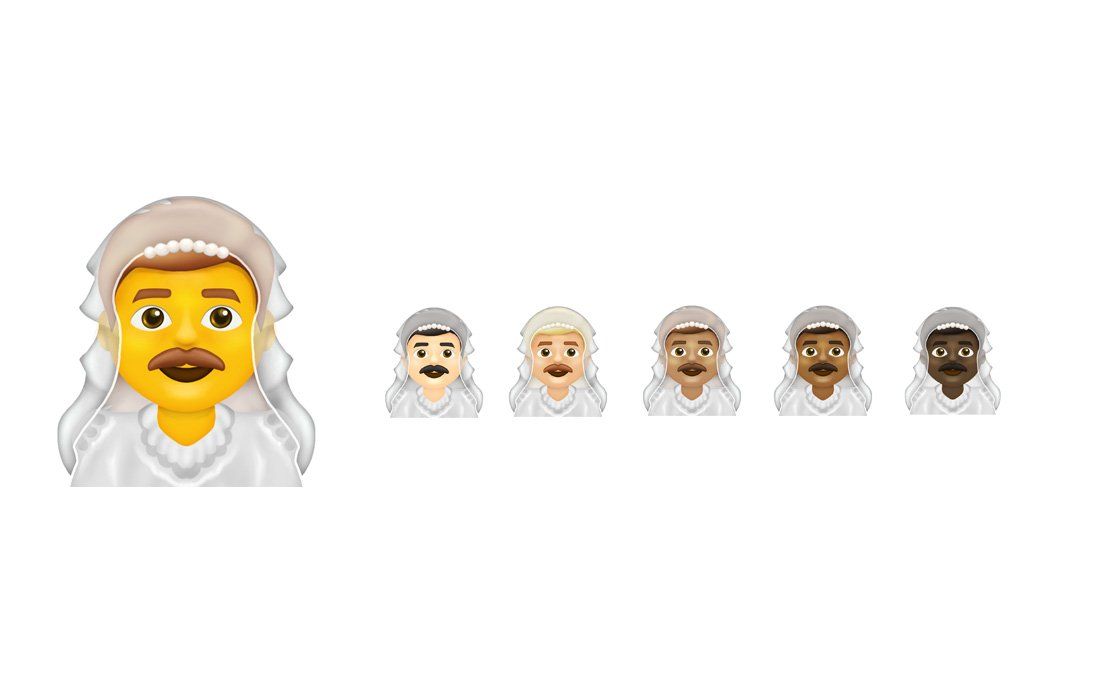
Gender representation in emojis is crudely represented in haircuts, face shapes, and clothing. Of course, gender is not a haircut or a body type or an outfit. But there is no simple way to represent the full gender spectrum in a limited emoji set, especially as this limited set has become more detailed and therefore less universal over the years.
Google’s blobs were the most successful emoji designs in regards to gender representation because of their abstraction.
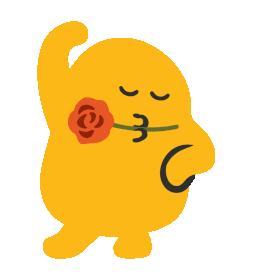
A blob breastfeeding or bottle feeding a tiny baby blob could be any gender. A blob in a tux or a veil could represent a far wider range of people than an emoji with short hair in a tux or veil. But Google retired their lovely blobs throughout 2016 and 2017. They were replaced with human designs better suited to the Unicode standard skin tones approved in 2015.
As emojis become more and more detailed, they become less and less expansive in their meanings. While I wish the blobs could return, that feels so unrealistic at this point. It seems we’ve gone so far in the direction of details in the human emojis that there’s no turning back. If that’s the case, at least anyone can feed a baby now.
